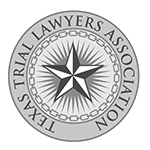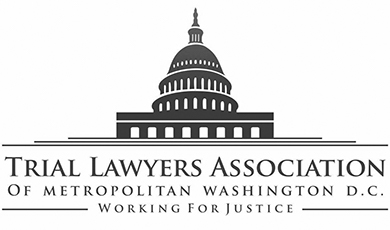Union Carbide Corporation : A Legacy of Mesothelioma and Asbestos
Posted on Tuesday, September 17th, 2013 at 9:04 pm
I. Introduction
If Union Carbide were only a miner of the richest asbestos deposit ever exploited[3], and not one of the largest owners and operators of chemical plants on the planet, the following concession about the hazards of asbestos would seem almost responsible in its attempt to alert the reader to the hazards of asbestos:
A type of cancer named mesothelioma has been noted to be associated with asbestos exposure in recent years. These tumors, while rather few in number to date, may occur in individuals with histories of only slight exposure. . . . There is considerable evidence that crocidolite is most frequently associated with mesotheliomas. From the data available it appears that the TLV of 5 mppcf may not be low enough to protect against mesothelioma.[4]
Unfortunately, because this statement was intended to exonerate Union Carbide asbestos by implicating others, Carbide’s confession is at best a cynical attempt to appear concerned about human health and safety, and at worst, a fraud that has perpetuated untold suffering.
The plaintiffs’ theory in the Union Carbide case might well be “You can’t have your cake and eat it too.” But when sitting on the “most significant mineral deposit in the world”[5] some corporations won’t let a little thing like cancer get in the way of pulling right up to that carcinogenic desert tray and eating the entire cake, leaving only the crumbs of human devastation on its plate.
While condemning crocidolite asbestos and casting the more ubiquitous chrysotile asbestos as the innocent bystander, guilty only by association with its evil step-sisters the dreaded amphibole type’s, Union Carbide has not only helped advance that greatest of all jurisprudential frauds known as the “Chrysotile Defense” it has unwittingly condemned its own plant activities to the trash heap of corporate indifference.
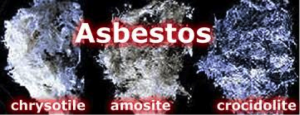
- II. “The range of applications [for Union Carbide asbestos] is limited only by your imagination.”[6]
The story of Union Carbide and asbestos is a tale of a corporate giant whose lust for its piece of a multi-billion dollar asbestos market[7] blinded it to problems with the ubiquitous killer dust in its own backyard, the dozens of chemical plants all over the world that exposed tens of thousands of workers to asbestos on a daily basis.
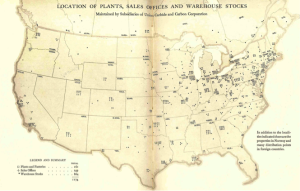
Union Carbide’s sins were born in the almost sarcastically named “Air Hygiene Foundation” where Carbide took its place next to the likes of Johns-Manville, on a board of directors whose members rival big tobacco in the body count for which they must accept responsibility.
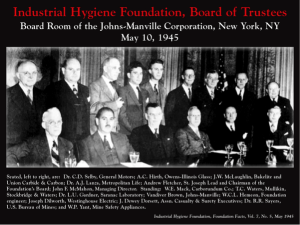
Independent of the Air Hygiene Foundation, Union Carbide is widely known for the world’s worst industrial disaster at Bhopal India where in 1984 an estimated 15,000-20,000[9] people were killed and hundreds of thousands more injured when a massive leak of methyl isocyanate gas escaped one of its plants.[10]
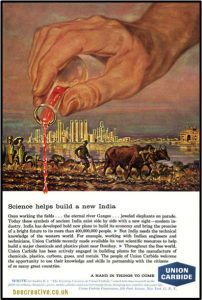
Lesser known is that Union Carbide was also responsible for America’s most deadly industrial disaster.[11] The American tragedy became known as “The Hawks Nest Incident” after the Hawk’s Nest Tunnel near Gauley Bridge, West Virginia, a tunnel bored by Union Carbide through a mountain of nearly 100% pure crystalline quartz silica. Union Carbide built the tunnel to divert water for a hydroelectric project to provide power to one of its subsidiary plants. Thousands of men hired for the project developed “acute silicosis,” a disease undiagnosed until Gauley Bridge, and died as a result. The American industrial disaster experience with Union Carbide cost an estimated 3000 lives.[12]
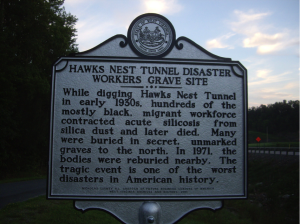
While early shams such as the Air Hygiene Foundation, that “creature of industry and the one institution upon which employers [could] rely for a sympathetic appreciation of their viewpoint,”[13]are interesting from an historical perspective, Carbide’s malfeasance is unique more for its modem genesis than for any other trait. Union Carbide may just be a major contributor to the worst, most prolonged, and ongoing environmental disaster of all times, the proliferation and profitization of asbestos.
In 1957 a Union Carbide exploration geologist stumbled across the single largest deposit of asbestos in the world. The “leathery mountain of asbestos,” as it was called, was located in the Coalinga Mountains of California.[14] The Coalinga asbestos was unlike any asbestos reserve anywhere in the world. The fiber was too short for conventional thermal insulation markets, but the ore itself yielded as much as fifty percent asbestos compared to the scant ten percent comparable Canadian mines delivered. Carbide had a problem, a billion dollar product and no buyers.
The greed that colored Carbide’s decision to unearth the poison rock was surpassed only by the speed with which they secured fresh addicts. New markets for its use were forged in what Carbide called its “mandate,”[15]— more buyers, more users, more money, a deadly triple play. By the company’s own estimates, asbestos production in the United States doubled just a few short years after the Coalinga Deposit came on line.[16]
Union Carbide engaged in a research and development program aimed at putting their “Calidria” asbestos everywhere and anywhere it could. No use was sacrosanct– Carbide asbestos went everywhere from children’s playgrounds to facial tissue. Free samples were shipped to manufacturers of various products all over the globe — no problem with giving product away, Carbide would get them on the comeback once the user was hooked. The following is a brief example of the variety and extent of uses Carbide sought for its asbestos:
facial tissue food wrappers water purification
taxidermy joint compounds paper products
asphalt tennis courts paint
gypsum board stucco automotive undercoatings
tire rubber fireproof coatings respirators
shower stalls solvents model airplane glue
beer distillation auto body repair floor tiles
roof coatings filter media playground blacktop
swimming pools grout anti-freeze
bakeware shingles highway markers
boat hulls grease Bowling Pin Paint
With an ore supply estimated to last 100 years,[17] and again at 200 years, [18] and again at 4000 Years,[19] then finally just termed “inexhaustible,”[20] new products were necessary to make it profitable. The sales force was instructed that nothing was off limits, the “range of applications [was]limited only by your imagination.”[21]
III. “Mesothelioma is the most disturbing of the asbestos diseases.”[22]
Mesothelioma is known as a signal tumor for its unique and exclusive association with its one proven cause, asbestos.[23] Today, more than 2,500 Americans die of malignant mesothelioma every year[24] and 20 million people in the US are at risk of developing mesothelioma due to asbestos exposure.[25] And while, Union Carbide lawyers routinely try to convince juries that they have a special asbestos that does not cause cancer, according to the company’s most senior medical officer, “Union Carbide knew the hazards of asbestos before [they] ever started mining it,” Deposition testimony of Carl Dernehl, UCC Corporate Medical Director, March 10, 1989. According to an internal report prepared by Union Carbide’s United Kingdom Division, mesothelioma occurs “after a brief exposure, which may be as little as three months” or even “a single brief exposure.”[26] Not only did Carbide understand completely the havoc it was unleashing when it first tore into its mountain of asbestos, the chemical giant understood what the rest of the poisoned public did not- there was no definable safe limit of exposure to asbestos.
In 1967 one of the smoking guns of the Carbide asbestos litigation was written. Ian Sayers, an executive in Union Carbide’s English sister company, drafted a report entitled “Asbestos as a Health Hazard in the UK.” The “Sayers Report” was nothing short of a condemnation of asbestos. Mr. Sayers lambasted the Threshold Limit Value for asbestos as “arbitrary” “with no experimental foundation.”[27]
And while Union Carbide lawyers sell to American juries one story, the fabrication about a safe, non-cancerous asbestos, internally the Union Carbide Medical Department warned its own lawyers such claims were “misleading half-truths” and a “diversionary tactic” and “that were “irrelevant to the fact that all varietities of asbestos produce disease.”[28]
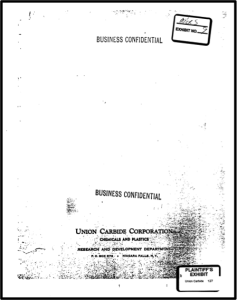
Mr. Sayers went on to detail the diseases associated with asbestos, their life-threatening potential, and pointed out that there was nothing to demonstrate that Carbide’s short-fiber chrysotile was anything other than every bit as lethal all other asbestos fiber types. Mr. Sayers stressed not only the legal obligation a company had not to endanger the public, but even dared to suggest the company had higher ethical and moral obligations not to continue exploiting asbestos. Company officials would characterize the Sayers Report as “reasonably accurate,”[29]although in litigation all over America today, Mr. Sayers is criticized as a non-scientist who dared to speak out on matters about which he knew little.
Mr. Sayers premonitions on the future of asbestos disease were not only ignored, the company’s asbestos production multiplied every year for the ten years following the Sayers Report. Union Carbide gave the job of drafting an information sheet on Calidria to its marketing department. The corporate medical director did not participate in outlining the information that Carbide would relay to the purchasers of its fiber. The “Asbestos Toxicology Report” mentioned nothing of Ian Sayers concerns about the TLV charade, completely mislead the reader about Calidria’ s true carcinogenic potential, and in the words of one Carbide asbestos purchaser, “was atrocious” and “created more questions than it answered.”[30]
The toxicology report laid the blame for asbestosis and cancer on “massive over-exposures over many years” and implicated the crocidolite fiber as the only cause of mesothelioma. The report went on to suggest that while 5 mppcf may be sufficient to protect a worker from asbestosis, it was highly likely even 2 mppcf was too high an exposure to crocidolite to protect against mesothelioma.[31]
The problem that Union Carbide created was that in its zeal to absolve its own asbestos so they could turn a profit, they implicated the very type of asbestos the company used by the mile and millions of square feet in its own chemical plants.
- III. Poisoning Union Carbide’s American Workers.
In I 963 Carbide performed what might be considered an admirable attempt to limit toxic exposures if the experiment had not failed so miserably. The failed attempts were known as the “Peele Studies” after the Industrial Hygienist who performed them.[32]
The Peele Studies were an attempt to quantify the exposures to asbestos created when fabricating asbestos-containing insulation products. The studies conducted air samples while three of the most widely used asbestos products of their day were fabricated. The results, indicated that two of the three products could not be fabricated safely, or what Carbide called safe according to the TLV in place at the time.
The problem with the Peele studies is three fold: First, there was no follow up. Even after the study revealed that certain insulation products released more asbestos than others the particular brands were still used; Secondly, the Industrial Hygienists used the incorrect TLV for determining acceptable levels of exposure. The acceptable limit for dust containing both asbestos and silica was determined to be 20 mppcf. No TLV for asbestos has ever been as high as 20 mppcf. The very first TLV for asbestos was set at 5 mppcf and Carbide was using a standard four times higher to determine what was safe.” Thirdly, reliance on the TLV at all was misplaced, particularly in light of the subsequently released Sayers Report.
The Peele Studies did nothing to prompt honest discussion of the hazards of asbestos at Union Carbide. Carbide’s insulator manual had absolutely no mention of asbestos hazards as late as the early 1970’s. The asbestos training film developed to show craftsmen was created with absolutely no input from Carbide’s Senior Industrial Hygienist. Carbide’s neglect prompted the safety professional to write, “Since control of asbestos is supposed to be my area of expertise, it strikes me rather strangely that no opportunity has been presented to me to have any input as to the content of such a program. I question the judgment of the planners in not including anyone in the field of environmental health as part of this effort.[33]
Almost ten years after the Peele Studies, work practices concerning asbestos had changed little to not at all. In 1972, Carbide’s insulators were still getting asbestos fiber counts in the range of 3-4 times the permissible exposure limits.” Carbide described its own efforts to limit exposure to asbestos on its premises as “unacceptable,”[34] noting that the simplest industrial hygiene methods such as dust suppression techniques were not being used. Additionally, not only were the insulators noted as having been exposed, but so were the adjacent workers.
Additionally, after all Union Carbide had done to convince users of its own asbestos that crocidolite was the culprit to blame for the invariably fatal mesothelioma, Carbide actually recommended crocidolite asbestos be used at its very plants. In 1964, after noting the technical superiority of the “blue African asbestos” in a particular unit, Carbide actually required all gaskets for use in specific applications be the “blue African asbestos,” the very fiber type the company blamed for all the excess cancers and mesotheliomas occurring among asbestos-exposed workers.[35] What Carbide knew when it mandated its workers use crocidolite was that when the gasket had to be replaced it would be hard and brittle, and in many instances would have to be brushed off, exposing the workers to a substance it admitted could never be determined safe at any level. The gaskets policy would not be changed until the mid 1980’s.[36]
V. Summary
Ever since the landmark case of Borel v. Fibreboard, 28 the manufacturer has been held to the duty of an expert when it comes to knowing the hazards of its product. 29 Union Carbide sits in a unique position among those who profited from asbestos. Not only must Carbide be held to the standard of reasonable care in providing a safe work place, but as the exploiter of the largest asbestos deposit in the world, and one whose uses for asbestos was limited only by its imagination, Union carbide is subject to the duty of an expert in asbestos cases. An accidental discovery in 1957, an unprecedented research and development program, and half a century later Union Carbide’s legacy is one of mesothelioma and asbestos.
[1] Disclaimer. This paper represents one lawyer’s opinion on the liability of Union Carbide Corporation. Reasonable, and sometimes not so reasonable, minds can differ on the cause of tens of thousands of avoidable cancer deaths.
[2] UCC Internal Correspondence, Nov. 22, 1983
[3] UCC Technical Report, May 1969
[4] UCC Asbestos Toxicology Report, 1969.
[5] UCC Technical Report, Mary 1969.
[6] UCC Technical report, July 7, 1964.
[7] UCC Research & Development Confidential Report, August 25, 1967.
[8] UCC Stockholders Report, October 1929.
[9] https://www.britannica.com/EBchecked/topic/1257131/Bhopal-disaster
[10] AK Dubey (21 June 2010). “Bhopal Gas Tragedy: 92% injuries termed “minor””. First14 News
[11] See Cherniack, Martin (1986). The Hawk’s Nest Incident. Yale University Press. ISBN 978-0-300-04485-0.
[12] See. Spangler, Patricia (February 19, 2008). The Hawks Nest Tunnel. Wythe-North Publishing. ISBN 978-0-9801862-0-8.
[13] Castleman, Barry, “Asbestos Medical and Legal Aspects,” 3rd Ed., p. 596; Prentice Hall Law & Business, 1990 (quoting from an Air Hygiene Foundation members personal writing to another member in 1936).
[14] UCC Technical Report, Reprinted from a paper presented to the Western Coatings Technology Society Meetings, in Denver, Los Angeles, San Francisco, Portland, Seattle, and Vancouver, B.C. in May 1969.
[15] UCC Business Confidential Memorandum, December 19, 1968.
[16] Mineralogy of the Coalinga Asbestos Deposit, Technical Report for UCC.
[17] UCC Technical Report, July 7, 1964.
[18] UCC Monthly Report, May 31, 1963.
[19] UCC Correspondence to Chevron Asphalt Company, April 29, 1976. April 8, 1963
[20] UCC Correspondence to B.F. Goodrich Company, Jan. 29, 1979.
[21] UCC Technical Report, July 7, 1964.
[22] Sayers, Ian; “Asbestos as a Health Hazard in the United States.” Union Carbide UK Internal Report, 1967
[23] Selikoff IJ (1986). “Occupational Respiratory Diseases”. Public Health and Preventative Medicine (12th ed.). Appleton-Century-Crofts. p. 532.
[24] https://www.cdc.gov/mmwr/preview/mmwrhtml/mm5815a3.htm
[25] See, Carbone, et al, “Malignant Mesothlioma: Facts, Myths, and hypothesis”; J Cell Physiol. 2012 Jan;227(1):44-58. doi: 10.1002/jcp.22724.
[26] Sayers, Ian; “Asbestos as a Health Hazard in the United Kingdom.” Union Carbide UK Internal Report, 1967 at p. 11.
[27] See id. at p. 16.
[28] UCC Internal Correspondence, from K.S.Lane, M.D. UCC Assistant Medical Director to Robert F.X. Fusaro, UCC Law Department, May 22, 1973.
[29] UCC Medical Department Internal Correspondence, June 7, 1967.
[30] UCC Report of Call on Glidden -DurkeeNov. 30, 1971
[31] UCC Asbestos Toxicology Report, 1967
[32] Union Carbide Industrial Hygiene Surverys, Peele Studies 1-3 1963-1964.
[33] UCC Correspondence from Don Deese to T.L. Rapp, Dec 1972.
[34] UCC Memorandum Re: Asbcstos Work Practices Plant 512 & 511 Construction, Dec., 1972,
[35] See id.
[36] Herman and Cynthia Wells, et al. v. Gasket Holdings Company; Cause No. A 161748, In the 581h Judicial District Court of Jefferson County, Texas resulted in a $35.2 million verdict in February 2001. Seventy percent of the liability was placed on the manufacturer of the very gasket at issue on the Carbide Premises.


